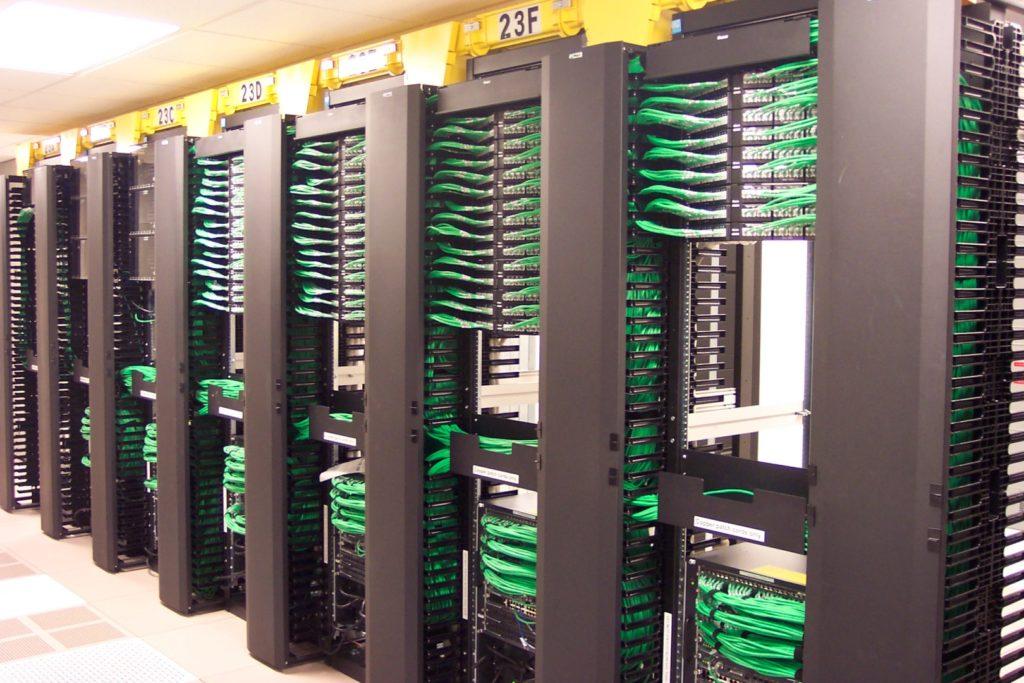- Related articles
- Optical Transceivers for Cisco N3K-C3048TP-1GE Switch
- Cisco 550X Series Stackable Managed Switches Offer…
- All Cisco QSFP-40G-LR4's information (List price, Specs, Datasheet PDF, Compatibility matr
- Difference between transmitter and receiver
- Optical Transceivers for Cisco WS-C3560V2-24TS-S Switch
- Optical Transceivers for Cisco SF250-48-K9-EU Switch
- Optical Transceivers for Cisco WS-C2960-24PC-S Switch
- Optical Transceivers for Cisco N9K-C9396PX= Switch
- Applicable to 100BASE-EX Standard Optical Transceiver Models
- How to Optimize Data Center with Ribbon Fiber Optic Cable?

One of the key tasks of a data center manager is to plan the infrastructure of the data center based on actual needs and future needs. So how do you build a database of the best and most efficient data centers? This tutorial will provide you an answer.
The necessary components for building the best data center infrastructure:
Rack and Cabinet
Rack and cabinet is the essential components for the data center, but their importance is often overlooked. In fact, you will get in trouble if you choose a wrong one, and will cause many problems: heat, dust, and temperature can cause damage to equipment in racks and cabinets, high cooling costs, messy cables, excessive noise, and safety leaks etc. So we should choose the network equipment that can accommodate the "maximum size" and have excellent cooling effect, high security racks and cabinets when purchasing.

Power Protection System
As we all know that all business activities are closely related to the data center, any accidental downtime in the data center will result in significant losses, so it is very important to provide a reliable power for the data center. This requires that the power protection system must have high performance in terms of redundancy, manageability, scalability, and so on.
Cooling System
The cooling system is essential because the heat of the data center is large and the operation of the network equipment needs to be carried out at constant temperature. The common cooling ways includes free cooling, evaporative or adiabatic cooling, sealed cooling, chimney cabinets and ceiling duct cooling etc. These cooling ways have their own merits and demerits and application. We should build an appropriate cooling system based on the specific need and application.
Structured Cabling
With the growing number of ports in the data center, network equipment is becoming more and more intensive, how to effectively manage a large number of cable and network equipment has become the problem that need to answer urgently. In this case, the traditional unstructured cabling does not meet the needs of data center high-density cabling. While structured cabling is a flexible, reliable, efficient cabling system, which can be divided into twisted pair copper cabling system and fiber optic cabling system. Twisted pair copper cabling system is mainly used to achieve the short-distance (less than 100m) connection between devices; fiber optic cabling system can meet the demands for high bandwidth, high reliability, high density, high flexibility, high scalability, especially MPO / MTP pre-terminated fiber products can provide an superiority that ordinary cabling system unparalleled. Not only reduces the installation time and cost, but provides a high density of installation and provide a guarantee for the future development of the network as well.

Four factors that affect the efficiency of data centers
Bandwidth
Time of Deployment
Extensibility





















































